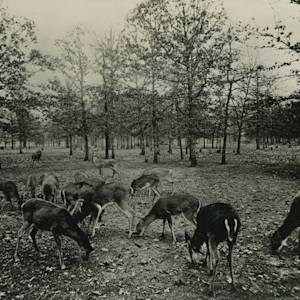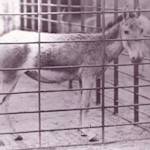Saiga antelope
2021 CE • Mongolia, Russia, and Kazakhstan
"Known for its distinct nose and ribbed horns, the once abundant saiga can trace its history back to the time of woolly mammoths across what eventually became southeastern Europe and Central Asia. Currently considered critically endangered by the [IUCN], these unique antelopes have already gone extinct in their native ranges throughout Ukraine and China—mainly due to excessive hunting. Over a period of 15 years starting in the 1990s, the global saiga population decreased 95%, one of the fastest declines ever recorded for any mammal species. Today, there are just five resident saiga populations left on Earth, one in Russia, three in Kazakhstan, and one in Mongolia . . . Once numbered in the millions, saigas saw a drastic decline in population in the early 20th century. Legal protections in 1919 helped bring them back, reaching populations of around 540,000 animals in Russia and 1,300,000 in Kazakhstan in 1963. In the 1990s, however, saiga numbers fell once again as a result of political and economic changes following the breakup of the USSR. Numbers continued to plummet even further as international borders began opening up, creating more opportunities for trading saiga horn—highly valued in traditional Chinese medicine. Historically, illegal hunting represented the greatest threat to the dwindling global saiga population, but time has shown that these animals are extremely vulnerable to factors like climate change and disease as well."
Katherine Gallagher, "The Critically Endangered Saiga Continues to Face Fluctuating Populations," Treehugger, September 24, 2021.
Image: Navinder Singh, CC BY-SA 4.0, via Wikimedia Commons


Learn about Maya Lin’s fifth and final memorial: a multi-platform science based artwork that presents an ecological history of our world - past, present, and future.

Discover ecological histories and stories of former abundance, loss, and recovery on the map of memory.

Learn how we can reduce our emissions and protect and restore species and habitats – around the world.

See how art can help us rethink the problems we face, and give us hope that each one of us can make a difference.

Help make a global memorial something personal and close to home. Share your stories of the natural world.


